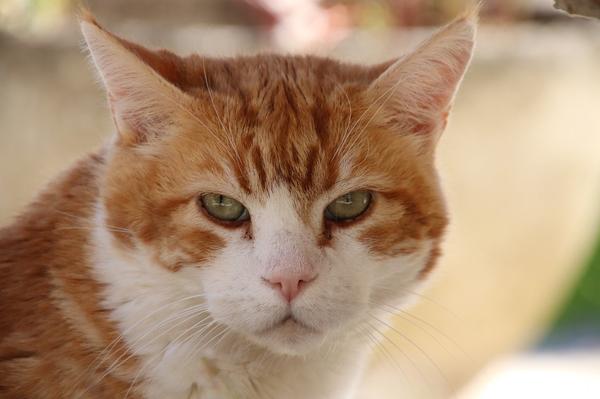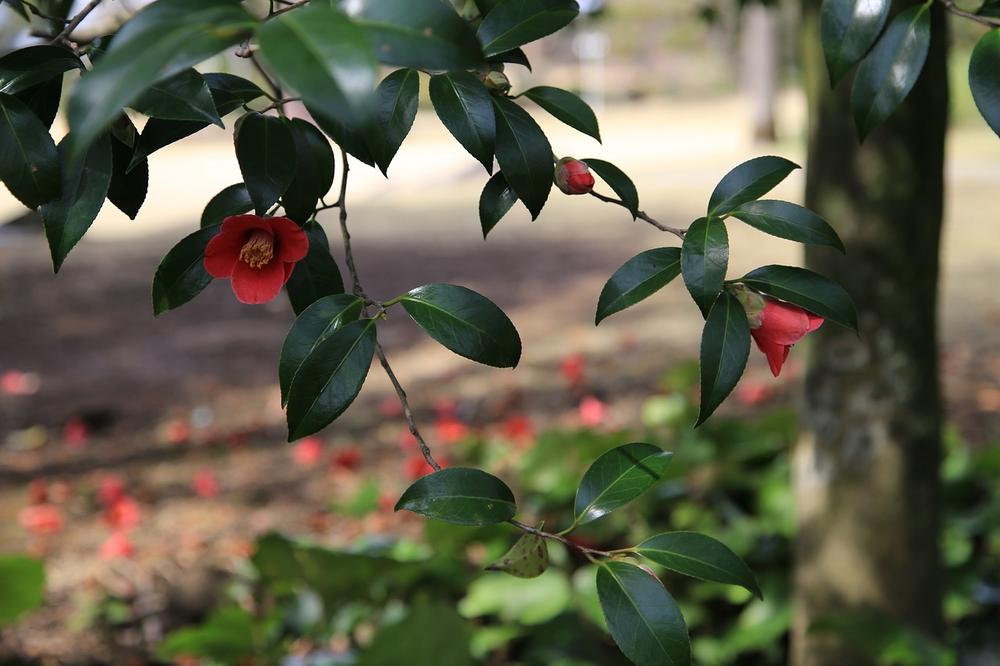Is Camellia Toxic to Cats? (Discover the REAL Answer)

Picture this:
Your beloved feline companion innocently exploring the backyard, blissfully unaware of the potential danger lurking in those vibrant petals.
Worried sick?
Curious to know the truth?
Well, hold on tight because we're about to dive into the mysterious world of camellias and their mysterious impact on our whiskered friends.
Keep reading, my friend. 😺
Is Camellia Toxic to Cats
While some species of camellias, like the common camellia and peony camellia, may pose a risk if ingested in large quantities, the Camellia sinensis plant, used to make tea, is safe for cats. However, cats can have adverse reactions due to saponins found in camellia plants, so you have to control their consumption and limit their exposure.
The ongoing debate about whether camellia plants are toxic to cats revolves around the presence of saponins, which are natural toxins found in certain types of camellias.
You'll be relieved to know that Camellia sinensis, the plant used to make tea, is perfectly safe for your beloved feline companion.
However, other species of camellias like the common camellia and peony camellia may pose a risk if ingested in large quantities.
So, what do you need to bear in mind when it comes to camellia plants?
First and foremost, these evergreen wonders with their broad leaves come in a variety of vibrant colors.
Now here's something crucially important for you:
Camellia plants, including Camellia japonica, won't harm cats, dogs, horses, deer, small mammals, or any other animal for that matter.

But there's a catch – cats react differently.
You see, the saponins concealed within camellia plants can disrupt your kitty's delicate digestive system.
It's kind of like how undercooked chicken affects us humans (that's not good).
To ensure the safety of your furry feline friend, you should control their consumption of camellia plants.
Avoid letting them indulge in large amounts of these plants, and ensure to limit their exposure to these potentially harmful beauties.
And last but not least, let's up the ante...
As an additional precautionary measure, consider planting your camellias in areas that are off-limits to your cat. This way, they won't be able to nibble on the leaves or get access to those precious petals.
Main points I'll expand upon further down this article:
- Camellia plants can cause stomach upset in cats if eaten in large quantities.
- The saponins in camellia plants can lead to vomiting and diarrhea in cats.
- Consuming any type of plant material can cause gastrointestinal symptoms in cats.
- Allergic reactions and serious symptoms can occur in cats from certain plants.
- Excessive consumption of plant material or poisonous plants can be problematic for cats.
- Compulsive disorders in cats may lead to them eating non-food items, including plants.
- Consuming large quantities of camellia plants can cause stomach irritation, resulting in mild diarrhea or vomiting in cats.
- Camellias are not toxic to pets but should be kept away to prevent digestive issues.
- Prompt veterinary attention is necessary if a cat ingests any part of a camellia plant.
- It's best to be cautious and keep camellias away from cats if unsure about their toxicity.
But what happens if your curious feline decides to nibble on camellia plants?
Let's explore the potential consequences and why it's crucial for you to be aware of them...
What Effects Do Camellia Plants Have on Pets?
While camellia plants are not considered toxic to cats, they can still cause stomach upset and mild gastrointestinal symptoms if consumed in large amounts.
Here are a few important things to know:
- Saponins, which are present in camellia plants, can lead to vomiting and diarrhea in cats when ingested in large quantities.
- Choking is a common issue when cats consume leaves, flowers, and stems of any plant material.
- Some cats may have allergic reactions to certain plants, so it's important to monitor their behavior after exposure.
- Excessive consumption of any type of plant material can be problematic and result in uncomfortable gastrointestinal symptoms for cats.
- Certain cat breeds, such as those prone to compulsive disorders, may have an increased risk of consuming non-food items like fabric or plants.
- While nibbling on camellia buds, flowers, and leaves might not cause severe problems in pets, it is important to prevent them from consuming large quantities.
- Camellia leaves are used to produce tea, which contains caffeine and L-theanine, offering potential health benefits for humans.
- To avoid digestive issues and protect your plants, keep camellia plants away from cats.
It's always better to err on the side of caution when it comes to our furry friends' health! 🌿

And if you're concerned about the effects of camellia plants on your furry friends, I have you covered.
I recently wrote an informative blog post that addresses the important question of whether philodendron plants are toxic to cats.
In my article, "Are Philodendron Toxic to Cats," I provide valuable insights on keeping your pets safe and sound.
Trust me, you won't want to miss it! Read more here.
What Are the Symptoms of Camellia Toxicity in Cats?
Eating camellia plants can make cats sick, causing them to throw up and have diarrhea.
Camellia toxicity in cats is dangerous and could even kill them.
If your cat eats any part of a camellia plant, you should quickly take them to the vet.
If you think your cat might have eaten a camellia plant, you need to get advice from a vet.
And if your pet shows any problems after eating camellias, it's best to seek professional veterinary care.
Protecting Pets and Cats from Camellia Plants
If you want to protect your camellia plants from cats, here's what you need to do:
- Put up chicken wire fences or barriers so cats can't get near.
- Keep cats entertained so they don't feel the urge to chew on your plants out of boredom.
- Give cats other things to pay attention to, so they're not constantly bothering your camellias for interaction.
- Watch out for kittens who might be curious and try to mess with your non-food items like camellias.
- Remember that some cats have pica and are drawn to eating plants, so be cautious.
- Plant herbs or roses next to your camellias as companions to deter cats.
- Use deterrents like catmint, sage, thyme, or spiky plants to keep cats away.
By adhering to these instructions, you can appreciate the charm of your camellia plants while remaining unconcerned about any damage caused by cats.
Always remember, it's easier to prevent a problem than to find a solution afterwards!
Make sure you regularly check your garden and take quick action if you see any damage or cats getting too close to your beloved camellias.
Happy gardening!
And that wraps up today's article.
If you wish to read more of my useful articles, I recommend you check out some of these: Is Zz Plant Toxic to Cats, Is Bromeliad Toxic to Cats, Are Boston Ferns Poisonous to Cats, Is Brazilwood Toxic to Cats, and Are Roses Poisonous to Cats
Talk soon,
-Sarah Davis